#Babbacombe Lee
Text
John 'Babbacombe' Lee - The Man They Couldn’t Hang.
It is February 23, 1885 in the coach house of Exeter Prison, Devon, England. The time is 8 a.m.
Outside the prison, a large crowd has gathered to await the hanging of convicted murderer John Lee, condemned for the brutal murder of his employer, Miss Emma Keyes, the previous year. When the execution has been successfully completed the prison bell will toll for 15 minutes and the dreaded black…

View On WordPress
#Babbacombe Lee#Dartmoor#Dartmoor National Park#death penalty#death sentence#Devon#Emma Keyes#England#Exeter#failed execution#Fairport Convention#gallows#History#James Berry#John Lee#murder#Tavistock#The Man They Couldn&039;t Hang#Torquay
0 notes
Video
youtube
John Lee - Fairport Convention
#so... babbacombe lee is like tommy with a fiddle and mandolin lol#probably an unpopular opinion but i think swarbrick has a better voice than any member of the who#i say this as a huge who fan#also probably no one cares about this except me lol
0 notes
Text
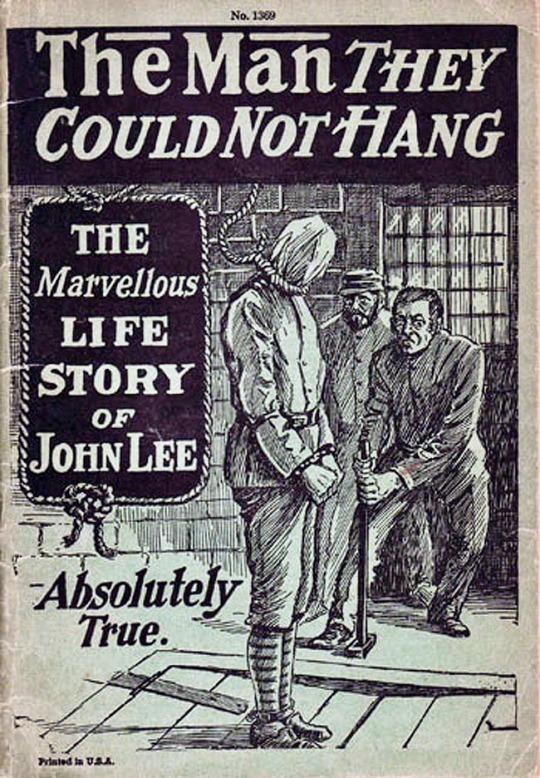
On this day:
GOOD LUCK ON THE GALLOWS
At dawn on February 23, 1885, John Lee approached the prison gallows from his cell at Exeter prison in England. Guilty of murdering Emma Keyse, his wealthy widow employer, with a hatchet, Lee was going to hang. The hangman asked for last words as he slipped the noose around the condemned man's neck. "No. Drop away," was all Lee said. At the sheriff's signal, the executioner released the latch holding the trap door on the floor of the gallows, sending Lee to die of a broken neck or suffocation. Nothing happened. The release was tried again. Again nothing happened. Lee went back to his cell.
The sheriff and hangman investigated. The rope had been stretched, the hinges oiled, and the release appeared in working order. With the hangman standing on the door, holding the rope in his hands, they pulled out the bolt, the door opened, and the hangman fell through. Lee was shuffled back out, with his arms still tightly tied behind him. Again the signal was given, and the trigger pulled to drop the door. Lee stood and waited. The hangman went under the scaffold and saw that the bolt had been pulled, but the door wouldn't budge. The spectators were becoming uneasy. Lee was returned to his cell. The warden stood on the trap door, holding onto a guard on either side. The trap opened.
A third and a fourth time, the execution was attempted before the apprehensive sheriff called a halt to it, referring the matter to the home secretary and then onto Parliament. John Lee's sentence was changed to life in prison and then reduced to a few years.
Text from: Almanac of the Infamous, the Incredible, and the Ignored by Juanita Rose Violins, published by Weiser Books, 2009
1 note
·
View note
Text

Man They Could Not Hang
Throughout the past 100 years, the myths surrounding John ‘Babbacombe’ Lee’s story have taken on a life of their own.
Urban legends, ghostly sightings and tales of supernatural intervention have grown far beyond what anybody in 19th century South Devon could have imagined for the lowly manservant.
Lee, nicknamed The Man They Could Not Hang, came to prominence when he was convicted of murdering his employer, Emma Keyse, and setting fire to her Babbacombe home, called The Glen.
Mike Holgate, of Torquay, an expert on John Lee, said: “During his trial, the prosecution portrayed Lee as a depraved lunatic capable of smashing an old lady’s head with an axe, then slashing her throat with a knife.
“The judge, in passing sentence of death, remarked how calm Lee’s demeanor had been throughout the trial.
“Lee is said to have leaned forward in the dock and replied firmly: ‘The reason why I am so calm is that I trust in the Lord, and He knows I am innocent.’
“In the days leading up to the date of execution, Lee read the Bible prodigiously and proclaimed his innocence.
“It is said he told the prison chaplain the real culprit was the lover of his half-sister, Elizabeth Harris, who was cook at The Glen and expecting a child which was later delivered out of wedlock in Newton Abbot Workhouse.”
The prison governor’s logbook states on the morning of the execution, as Lee approached the gallows trapdoor, he told two prison guards he had dreamt ‘three times the bolt was drawn, and three times the bolt failed to act’.
Lee was a lonely figure on the gallows, but each time an attempt was made to open the trapdoor, it stuck. After each failed attempt the trapdoor was tested and it opened normally, but when Lee stood on it again the door would not open. Three times this happened, each with the same outcome. It is rumored that throughout the ordeal on the scaffold, a white dove perched on the gallows until the condemned man was led safely back to his prison cell.
The Home Secretary told Parliament he could not expect a man to ‘twice face the pangs of imminent death’. Lee began a 23-year prison sentence in Exeter, and from that day the myths about his life spread across the world. Witchcraft and devilish incantations were often talked of when people tried to reason Lee’s escape from death. Friends of Lee claimed they had paid a white witch handsomely to save him from the noose.
Other people told stories of how Lee’s mother had visited the church graveyard near her home at Abbotskerswell, recited the Lord’s Prayer backwards and summoned the Devil to save her son. Also, an old woman called Granny Lee, from Ogwell, is said to have told locals ‘they shall not hang him’ as she walked to Exeter on the morning of the execution and cast a spell on the gallows from a spot overlooking the prison.
In 1905, the witchcraft theory gained credence from a surprising source, the Archdeacon of Westminster, Basil Wilberforce. At the time of the murder he had been a regular visitor to Babbacombe, where he addressed temperance meetings organized by a distinguished neighbor of Emma Keyse, Lady Mount-Temple of Babbacombe Cliff. The churchman was chaplain to the House of Commons and vehemently opposed a growing campaign for Lee’s release. He informed the Home Office that he ‘knew the Lees well’ and said they were ‘a well-known witch family on Dartmoor’.
Whether miracle or sorcery, the events on the scaffold cast doubt in many people’s minds about Lee’s guilt. The editor of The Times, who poured scorn on the Home Secretary’s decision to eventually reprieve Lee, said Lee’s story would ‘encourage foolish and superstitious people to believe, in spite of evidence as clear as noonday, that Lee was wrongfully convicted’.
Mike added: “The Home Office didn’t help themselves, because they refused to release details about the trapdoor malfunction for 100 years, so the myths grew. “There were even questions asked in Parliament at the time. I can’t understand why they wouldn’t announce the details, and they had all the speculation to go through again when he left prison 23 years later.”
After his release, Lee went to London, where he then eloped with a barmaid, abandoning his wife who was expecting their second child. He then seemingly disappeared without trace, having reportedly visited Australia, America and Canada and Mike Holgate only recently discovered that Lee died in 1945.
Mike traced the grave to a cemetery in Milwaukee, America. Records show Lee died, aged 80, on March 19, 1945. The legend certainly did not die with Lee, however, because Mike recently recorded a number of spooky tales about The Man They Could Not Hang. He said: “A strange event added to the mystery more than a century later when a pub named the John Lee opened on Babbacombe Downs at Easter, 1989. “At the beginning of June, the swinging pub sign bearing the logo of a hanged man fell to the ground on three consecutive nights for no discernible reason.
#Man They Could Not Hang#paranormal#ghost and hauntings#ghost and spirits#haunted salem#myhauntedsalem
11 notes
·
View notes
Text

Fairport Convention - The Man They Could Not Hang (BBC TV 1975)
More Fairport Confusion! Here we've got a cool 1975 BBC documentary that goes into deep detail about the mystery of folk hero John "Babbacombe" Lee — AKA "The Man They Could Not Hang." Lee was the subject of Fairport's 1971 Babbacombe Lee LP, and the band's excellent live performances serve as a kind of Greek chorus for the hour-and-a-quarter film, along with broadsides delivered by none other than Martin Carthy. Scholarly investigation into 19th century gallows tech! Silent films from Australia! Toothless old Brits speculating! And a whole lot of Swarb. What more could you possibly ask for?
5 notes
·
View notes
Text
Artifact Series J
J. Allen Hynek's Telescope
J. Edgar Hoover's Tie
J. McCullough's Golf Ball
J. Templer's Wind-Up Tin Rooster *
J. C. Agajanian’s Stetson
J.T. Saylors's Overalls
J.M. Barrie’s Swiss Trychels
J.M.W. Turner's Rain, Steam and Speed-The Great Western Railway *
J.R.R. Tolken's Ring
Jack-in-the-Box
Jack's Magic Beanstalk
Jack Daniel's Original Whisky Bottle
Jack Dawson's Art Kit
Jack Duncan's Spur *
Jack Frost's Staff
Jack Kerouac's Typewriter
Jack Ketch's Axe
Jack LaLanne's Stationary Bike *
Jack London's Dog Collar
Jack Parson's Rocket Engine
Jack Sheppard's Hammer
Jack Sparrow's Compass
Jack Torrance's Croquet Mallet
Jack the Ripper's Lantern *
Jackie Robinson's Baseball
Jackson Pollock's "No. 5, 1948"
Jackson Pollock's Pack of Cigarettes
Jackson Pollock's Paint Cans
Jack's Regisword
Jack Vettriano's "The Singing Butler"
Jack's Wrench
Jacob and Wilhelm Grimm's Kinder- und Hausmarchen
Jacob "Jack" Kevorkian's Otoscope
Jacob Kurtzberg's Belt *
Jacqueline Cochran's Brooch
Jacques Aymar-Vernay’s Dowsing Rod
Jacques Cousteau's Goggles
Jacques Cousteau's Diving Suit
Jacques-Louis David's Napoleon Crossing the Alps *
Jade Butterfly
Jadeite Cabbage
Jalal-ud-Din Muhammad Akbar's Smoke Pipe
Jamaica Ginger Bottle
Jaleel White's Hosting Chair
James Abbot McNeill Whistler's Whistler's Mother *
James Allen's Memoir
James Bartley's Britches
James Ben Ali Haggin's Leaky Fountain Pen
James Bert Garner’s Gas Mask
James Bett's Cupboard Handle
James Braid's Chair *
James Brown's Shoes
James Bulger's Sweater
James Buzzanell's Painting "Grief and Pain"
James Buzzanell’s Survey Books
James C. McReynolds’ Judicial Robe
James Chadwick's Nobel Prize
James Clerk Maxwell's Camera Lens
James Colnett's Otter Pelt
James Condliff's Skeleton Clock
James Cook's Mahiole and Feather Cloak
James Craik's Spring Lancet
James Dean's 1955 Prosche 550 Spyder, aka "Little Bastard"
James Dean's UCLA Varsity Jacket
James Dinsmoor's Dinner Bell
James Eads How’s Bindle
James Earl Ray's Rifle
James Fenimore Cooper's Arrow Heads
James Gandolfini's Jukebox
James Hadfield’s Glass Bottle of Water
James Hall III’s Shopping Bags
James Henry Atkinson's Mouse Trap
James Henry Pullen’s Mannequin
James Hoban's Drawing Utensils
James Holman’s Cane
James Hutton's Overcoat
James Joyce’s Eyepatch
James M. Barrie's Grandfather Clock
James M. Barrie's Suitcase
James Murrell's Witch Bottle
James Philip’s Riata
James Prescott Joule's Thermodynamic Generator
James Smithson's Money
James Tilly Matthews’ Air Loom
James Warren and Willoughby Monzani's Piece of Wood
James Watt's Steam Condenser
James Watt's Weather Vane
James W. Marshall’s Jar
Jan Baalsrud’s Stretcher
Jan Baptist van Helmont's Willow Tree
Jane Austen's Carriage
Jane Austen's Gloves
Jane Austen's Quill
Jane Bartholomew's "Lady Columbia" Torch
Jane Pierce's Veil
Janet Leigh's Shower Curtain
Janine Charrat's Ballet Slippers
Jan Janzoon's Boomerang *
Janis Joplin's Backstage Pass from Woodstock *
Jan Karski's Passport
Janus Coin *
Jan van Eyck’s Chaperon
Jan van Speyk's Flag of the Netherlands
Jan Wnęk's Angel Figurine
Jan Žižka's Wagenburg Wagons
The Japanese Nightingale
Jar of Dust from the Mount Asama Eruption
Jar of Greek Funeral Beans
Jar of Marbles
Jar of Molasses from The Boston Molasses Disaster
Jar of Sand
Jar of Semper Augustus Bulbs
Jar of Shiva
Jar of Sugar Plums
Jascha Heifetz's Violin Bow
Jason Voorhese's Machete
Javed Iqbal's Barrel of Acid
Jay Maynard's Tron Suit
Jean II Le Maingre's Gauntlets
Jean Baptiste Charbonneau’s Cradleboard
Jean-Baptiste-Siméon Chardin's Bubble Pipe
Jean Chastel's Silver Gun
Jean Eugène Robert-Houdin's Pocket Watch
Jean Fleury's Aztec Gold Coins
Jean-François Champollion’s Ideographic Dictionary
Jean Froissart's Mirror *
Jean-Frédéric Peugeot's Pepper Mill
Jean Hilliard’s Earmuffs
Jean Parisot de Valette’s Sword Sheath
Jean-Paul Marat's Bathtub
Jean Paul-Satre’s Paper Cutter
Jean-Pierre Christin's Thermometer
Jean Senebier's Bundle of Swiss Alpine Flowers
Jean Valnet's Aromatherapy Statue
Jean Vrolicq’s Scrimshaw
Jeanne Baret's Hat
Jeanne de Clisson's Black Fleet
Jeanne Villepreux-Power's Aquarium
Jeannette Piccard's Sandbag
Jeff Dunham's First Ventriloquist Box
Jefferson Davis' Boots
Jefferson Randolph Smith's Soap Bar
Jeffrey Dahmer's Handkerchief
Jeffrey Dahmer's Pick-Up Sticks
Jemmy Hirst's Carriage Wheel
Jenny Lind's Stage Makeup
Jeopardy! Contestant Podiums
Jerome Monroe Smucker's Canning Jars
Jerry Andrus’ Organ
Jerry Garcia's Blackbulb *
Jerry Siegel's Sketchbook
Jesse James' Saddle
Jesse James' Pistol
Jesse Owens' Hitler Oak
Jesse Owens' Running Shoes
Jesse Pomeroy's Ribbon and Spool
Jester's Mask
Jesus of Nazareth's Whip
Jesús García's Brake Wheel
Jet Engine from the Gimli Glider
Jet Glass Cicada Button
Jethro Tull's Hoe
Jeweled Scabbard of Sforza
Jiang Shunfu’s Mandarin Square
Jim Davis' Pet Carrier
Jim Fixx's Shorts
Jim Henson's Talking Food Muppets
Jim Jones' Sunglasses
Jim Londos' Overalls
Jim Robinson's Army Bag
Jim Thorpe's Shoulder Pads
Jim Ward's Piercing Samples
Jimi Hendrix's Bandana
Jimi Hendrix's Bong
Jimi Hendrix's Guitars *
Jimmie Rodgers Rail Brake
Jimmy Durante's Cigar
Jimmy Gibb Jr's Stock Car
Jimmy Hoffa's Comb
Jin Dynasty Chainwhip
Jingle Harness
Joan II, Duchess of Berry's Dress
Joan of Arc's Chain Mail
Joan of Arc's Helmet (canon)
Joan Feynman's Ski Pole
Joanna of Castile's Vase
Joan Rivers' Carpet Steamer
Joan Rivers' Red Carpet
Joe Ades's Potato Peeler
Joe Girard’s Keys
Joe Rosenthal's Camera Lens
Joel Brand's Playing Cards
Joséphine de Beauharnais' Engagement Ring
Johan Alfred Ander’s Piece of Porcelain
Johann Baptist Isenring’s Acacia Tree
Johann Bartholomaeus Adam Beringer's Lying Stones
Johann Blumhardt's Rosary
Johann Dzierzon’s Beehive Frame
Johann Georg Elser's Postcard
Johann Maelzel's Metronome *
Johann Rall's Poker Cards
Johann Tetzel's Indulgence
Johann Wolfgang von Goethe's Prism
Johannes Brahms' Coffee Creamer
Johannes Diderik van der Waals' Gloves
Johannes Fabricius' Camera Obscura
Johannes Gutenburg's Memory Paper *
Johannes Gutenburg's Printing Press *
Johannes Gutenberg's Printing Press Keys
Johannes Kepler's Planetary Model
Johannes Kepler's Telescope Lense
Johannes Kjarval’s Landscape Painting
John A. Macready's Ray-Bans *
John A. Roebling's Steel Cable
John A.F. Maitland's Musical Brainnumber *
John André’s Stocking
John Anthony Walker's Minox
John Axon's Footplate
John Babbacombe Lee’s Trapdoor
John Bardeen's Radio
John Bodkin Adams’ Stethoscope
John Brown's Body *
John Brown's Machete
John C. Koss SP3 Stereophones
John C. Lilly's Isolation Tank Valve
John Cabot's Map
John Carl Wilcke's Rug *
John Crawley's Painting
John Croghan's Limestone Brick
John Dalton's Weather Vane
John Dee's Golden Talisman
John Dee's Obsidian Crystal Ball
John Dee’s Seal of God
John DeLorean's Drawing Table
John Dickson Carr's Driving Gloves
John Dillinger's Pistol *
John D. Grady’s Satchel
John D. Rockefeller's Bible
John D. Rockefeller, Sr. and Jr.'s Top Hats
John Dwight's Hammer
John F. Kennedy's Coconut
John F. Kennedy's Presidental Limousine
John F. Kennedy's Tie Clip *
John Flaxman's Casting Molds
Sir John Franklin's Scarf
John Gay's Shilling
John Gillespie Magee, Jr.'s Pen
John H. Kellogg's Bowl
John H. Kellogg's Corn Flakes
John H. Lawrence's Pacifier
John Hancock's Quill
John Harrison’s Longcase Clock
John Hawkwood’s Lance
John Hendrix's Bible
John Henry Moore's White Banner
John Henry's Sledge Hammer
John Hetherington's Top Hat
John Holland, 2nd Duke of Exeter's Torture Rack
John Holmes Pump *
John Hopoate's Cleats
John Howard Griffin's Bus Fare
John Hunter's Stitching Wire
John Hunter's Surgical Sutures
John J. Pershing's Boots
John Jacob Astor's Beaver Pelt
John Jervis’ Ship
John Joshua Webb’s Rock Chippings
John Kay's Needle
John Keat's Grecian Urn *
John, King of England's Throne
John L. Sullivan's Boots
John Langdon Down's Stencils
John Lawson's Mannequin Legs
John Lennon's Glasses
John "Liver-Eating" Johnson's Axe
John Logie Baird's Scanning Disk *
John M. Allegro's Fly Amanita
John Macpherson's Ladle
John Malcolm's Chunk of Skin
John Malcolm's Skin Wallet
John McEnroe's Tennis Racket *
John Milner's Yellow '32 Ford Deuce Coupe
John Moore-Brabazon’s Waste Basket
John Morales' McGruff Suit
John Mytton’s Carriage
John Pasche's Rolling Stones Poster Design
John Paul Jones's Sword
John Pemberton's Tasting Spoon
John Philip Sousa's Sousaphone
John Rambo's Composite Bow
John Rykener's Ring
John Shore's Tuning Fork
John Simon's Mouthwash
John Simon Ritchie's Padlock Necklace
John Smith of Jamestown's Sword
John Snow's Dot Map
John Snow’s Pump Handle
John Stapp’s Rocket Sled
John Steinbeck's Luger
John Sutcliffe's Camera
John Sutter's Pickaxe
John Tunstall's Horse Saddle
John Trumbull's "Painting of George Washington"
John von Neumann's Abacus
John Walker's Walking Stick
John Wayne Gacy's Clown Painting *
John Wayne Gacy's Facepaint
John Wesley Hardin's Rosewood Grip Pistol
John Wesley Powell's Canoe
John Wesley Powell’s Canteen
John Wilkes Booth's Boot *
John Wilkes Booth Wanted Poster
John William Polidori's Bookcase
Johnny Ace's Gun
Johnny Appleseed's Tin Pot *
Johnny Campbell's University of Minnesota Sweater
Johnny Depp's Scissor Gloves
Johnny Smith's Steering Wheel
Johnny Weismuller's Loincloth *
Joker's BANG! Revolver
Jon Stewart's Tie
Jonathan Coulton's Guitar
Jonathan R. Davis' Bowie Knife
Jonathan Shay's Copy of Iliad/Odyssey
Jonestown Water Cooler
Jorge Luis Borges' Scrapbook
José Abad Santos' Pebble
José Delgado’s Transmitter
Jose Enrique de la Pena's Chest Piece
Jōsei Toda’s Gohonzon Butsudan
Josef Frings’ Ferraiolo
Josef Mengele's Scalpel
Josef Stefan's Light Bulbs
Joseph of Arimathea's Tomb Rock
Joseph of Cupertino's Medallion *
Joseph Day's Sickle
Joseph Ducreux's Cane
Joseph Dunninger's Pocket Watch
Joseph Dunningers’ Props
Joseph E. Johnston Confederate Flag
Joseph Force Crater's Briefcases
Joseph Fourier's Pocket Knife
Joseph Glidden’s Barbed Wire
Joseph Goebbels' Radio *
Joseph Jacquard's Analytical Loom
Joseph Bolitho Johns’ Axe
Joseph Kittinger's Parachute
Joseph Lister's Padding
Joseph McCarthy's List of Communists
Joseph Merrick's Hood
Joseph-Michel Montgolfier's Wicker Basket
Joseph Moir’s Token
Joseph Pilate's Resistance Bands *
Joseph Polchinski’s Billiard Ball
Joseph Stalin's Gold Star Medal *
Joseph Stalin's Sleep Mask *
Joseph Swan's Electric Light
Joseph Vacher's Accordion
Joseph Vacher's Dog Skull
Joseph Valachi's '58 Chevrolet Impala
Josephus' Papyrus
Joseph Wolpe's Glasses
Josephine Cochrane's Dishwasher
Joshua's Trumpet *
Josiah S. Carberry's Cracked Pot
Joshua Vicks' Original Batch of Vicks Vapor Rub
Josiah Wedgewood's Medallion
Jost Burgi's Armillary Sphere *
Jovan Vladimir's Cross
Juana the Mad of Castiles' Crown
Juan Luis Vives' Quill Set
Juan Moreira’s Facón
Juan Pounce de Leon's Chalice
Juan Ponce de León's Helmet
Juan Seguin's Bandolier
Jubilee Grand Poker Chip *
Judah Loew ben Belazel's Amulet *
Judas Iscariot’s Thirty Silver Coins
Judson Laipply's Shoes
Jules Baillarger's Decanter
Jules Leotard's Trapeze Net
Jules Verne's Original Manuscripts
Julia Agrippa's Chalice
Julia Child's Apron *
Julia Child's Whisk
Julian Assange’s Flash Drive
Julie d’Aubigny's Sabre
Julius and Ethel Rosenberg's Wedding Rings
Julius Asclepiodotus’ Shield Boss
Julius Caesar's Wreath
Julius Wilbrand's Lab Coat Buttons *
Jumanji
Jumper Cables
Junji Koyama’s Vegetables
Jure Sterk's Ballpoint Pen
Jürgen Wattenberg's Leather Provision Bag
Justa Grata Honoria’s Engagement Ring
Justin Bieber's Guitar
Justinian I's Chariot Wheel
Justin O. Schmidt's Wasp Mask
Justus von Liebig's Fertilizer Sack
Justus von Liebig's Mirror
3 notes
·
View notes
Note
Number 4 for the three songs ask game :)
Thank you!
4. three songs that you know thanks to your parents
My parents are/were huge music lovers and my dad was especially a fan of obscure 60s and 70s music, haha. So I will say In-a-gadda-da-vida by Iron Butterfly, John Babbacombe Lee by Fairport Convention and Paradise by the Dashboard Light by Meat Loaf (courtesy of my dad) and Bruce Springsteen - The River, John Hiatt - Crossing Muddy Waters and Jackson Browne - Running on Empty (courtesy of my mum).
1 note
·
View note
Text
Broken, Stuck, and Astounding Luck: The Dodged Demise of John Lee and Joseph Samuel
John Henry George Lee led a life full of accusations. Born in Abbotskerswell, Devon, England in 1864 he was in and out of trouble early on and left school to work for an elderly woman named Emma Anne Whitehead Keyse at her beachside estate called “The Glen.” He left the home to join the Royal Navy but trouble followed him there and he quickly became known as a thief. When his bad habits caught up with him in 1883 he was taken to court, convicted of robbery, and sentenced to hard labor at Exeter. Upon his release he returned to The Glen. Keyse opened her door to him once again, not realizing what lay ahead.
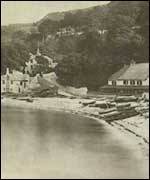
The Glen. Image via bbc.com/uk.
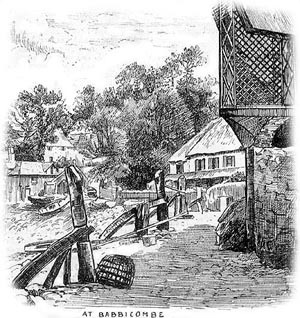
An illustration of The Glen. Image via http://murderresearch.com/
On November 15th 1884 Keyse’s home in Babbacombe Bay transformed into a grisly murder scene when the old woman was found with her throat slit, multiple wounds to her head, and a number of burns that seemed to point to an unsuccessful attempt to burn the body. The only people living at The Glen at the time of the murder was the now deceased Keyse, servants Jane and Eliza Neck, the cook Elizabeth Harris, and John Lee. All eyes immediately turned to Lee, not only because he had a cut on his arm he could not explain, but also because he was the only man in the house at the time of the murder. Although totally circumstantial, this was enough “evidence” to arrest him. The accusations were thin, that Keyse was disappointed in his behavior and threatened to cut his wages so he murdered her in cold blood, something that the prosecution argued was in line with his previous life of theft in the Royal Navy. The verdict was harsh, he was quickly convicted of murder and sentenced to hang. He was oddly calm throughout the trial, stating to the judge “The reason I am so calm is that I trust in the Lord and he knows I am innocent."

John Henry George Lee. Image via murderpedia.com
Lee’s execution date was scheduled for February 23rd 1885 at Exeter and he never wavered in claiming his innocence. He approached the scaffolding where executioner James Berry and a priest waited for him. The final prayers were said, Lee took his final breaths, and Berry pulled the lever to drop the trap door beneath Lee’s feet ending his life. Except nothing happened. The trap door never opened. Berry had tested the door and lever before the execution and reported that everything was in working order but now, despite the lever being moved back and forth and the trap door being stomped on, it refused to open. Lee’s still very much alive body was carried away from the gallows and a carpenter was brought in to examine the door. Finding nothing wrong with it, he sanded down the edges of the opening to prevent anything from being in the way of the trap door dropping. A large weight was fastened to a rope to test the trap door and it worked perfectly, dropping the weight through with one pull of the lever. Lee was brought back, the prayers were once again recited, the lever pulled, and again nothing happened. The door and the convict both remained in place. Lee was again moved from the gallows and this time he was taken back to his cell for twenty minutes while the entire system was looked over, oiled, and tested by workmen. Unable to find anything wrong, Lee was brought out to the gallows to meet his end for a third time. Again the prayers were said, the prisoner positioned, the lever pulled…and nothing happened.
With no clear explanation to what was keeping Lee from what should have been certain death, he was again taken back to a cell. But, the execution would not resume. Within hours Home Secretary Sir William Harcourt commuted the sentence to penal servitude for life stating "It would shock the feeling of anyone if a man had twice to pay the pangs of imminent death."
Lee served twenty-two years of his sentence and was released in 1907. He quickly took advantage of his new reputation of “The Man They Could Not Hang”, supporting himself by giving lectures about his life and becoming the subject of silent films and songs.
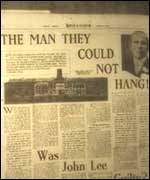
Newspaper discussing The Man They Could Not Hang. Image via bbc.com/uk.
Amazingly, John Henry George Lee is not the only man in history who can claim they were denied death by the gallows three times. In fact, he was not even the first to earn the bizarre title. That honor belongs to Joseph Samuel who defied death over fifty years earlier.
Joseph Samuel was born in England in 1780 and quickly found himself enveloped in a life of crime. At the age of fifteen Samuel was convicted of robbery and in 1801 he found himself among 297 other convicts making their way from England to the penal settlement at Sydney Cove in Australia. The prisons in Australia at the time were not heavily guarded due to their isolation. Situated far from any other form of civilization, if any prisoner was able to escape they would be faced with miles of harsh terrain and it was greatly assumed the wilderness would kill them. However, there are always exceptions to every rule, and Samuel was one of them. He successfully jumped the fence, ran out into the wilderness, and succeeded in coming out the other end of it alive.

Sydney From the West Side of the Cove painted by George Evans in 1802. Image via sydneylivingmuseums.com.au.
Samuel beat the odds with his escape, but the victory was short lived. On August 26th 1803 he and a gang of fellow thieves broke into the home of a wealthy woman named Mary Breeze and attempted to steal a desk with money hidden inside of it. Breeze was able to alert the police and an off duty officer Constable Joseph Luker went to investigate the scene, but instead of apprehending the culprits, he walked into an unfortunate end. Before sunrise his corpse was found in the back of Breeze’s home, brutally beaten to death. Laying near his body was the desk and a bloody wheel.
The murder of Constable Luker shocked the community and the military was called in to sweep the area in search of the murderers. Before long the house where Samuel and the rest of the gang of robbers was searched. In Samuel’s pockets were some of the stolen gold and silver coins and a barrow without its wheel was found inside the house. Everyone was arrested but due to a lack of evidence they were all eventually released, except for Samuel. A woman came forward and claimed she saw him near Breeze’s garden the night of the murder and after being interrogated Samuel finally admitted to the robbery but steadfastly insisted that he did not kill the officer. His confession combined with the coins and the broken barrow added up to enough to charge him with murder. He was brought into court and sentenced to hang in Brickfield Hill.
On September 26th 1803 twenty-three year old Joseph Samuel was led to the gallows to meet his end. Alongside him was another criminal, arrested and sentenced for an unrelated charge. A huge crowd had gathered to watch the execution and among them was Isaac Simmonds, one of the men arrested with Samuel and subsequently released. Reverend Samuel Marsden and Australia’s future first rabbi Joseph Marcus were on hand and when they asked the men for confession Samuel unleashed, stating that Simmonds had privately confessed to him that he was the murderer. Simmonds adamantly denied the charge but the crowd quickly turned on him, forcing the military to hold them back so the execution could proceed.
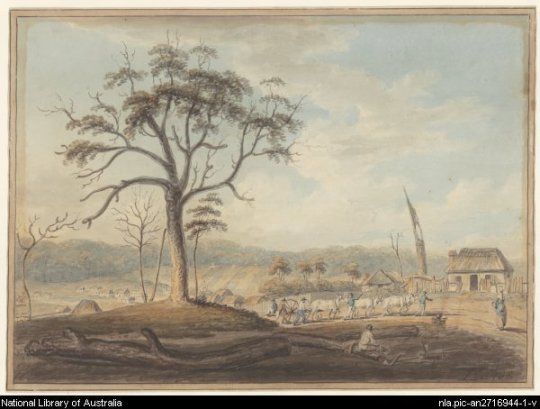
Painting of Brickfield Hill. Image via National Library of Australia.
When one pictures a scene of a hanging it will typically involve a scaffold and a trap door that opens up forcing the prisoner to drop to their death. As Joseph Samuel stood condemned to die, that form of hanging was still many years from being invented. In 1803 the convict would have a noose placed around their necks and they would be stood in the back of a horse-drawn cart. When the time came the horse would be startled or slapped making it pull the cart away from under the convict’s feet leaving them hanging and facing a slow, agonizing death. Samuel stood now in the back of a cart, head bent in prayer during his last few moments, and the cart was pulled away. But instead of Samuel being left to hang, the thick hemp rope around his neck snapped. He fell into the dirt below and sprained his ankle. The executioner quickly gathered up the prisoner and prepared to repeat the whole process. The hemp noose used at the time should have been able to hold over 1,000 pounds before breaking but a new one was quickly placed over his neck, the cart was returned, and again pulled away from under his feet. This time, the rope unraveled, leaving Samuel to hit the ground on his feet. Exasperated and certain of the integrity of the nooses, the executioner called the cart back again and set Samuel up for death a third time amid the large crowd growing louder and louder with some yelling that this was a sign of innocence from God. The third time the cart pulled away Samuel’s rope again snapped sending him into the dirt with his heart still racing. The crowd roared for the Governor to grant a reprieve and the Provost Marshal rode off to get his word. Before long the Governor was on site inspecting the ropes. After finding no evidence of tampering and without any explanation as to how they could have all broken, he declared his official ruling, Joseph Samuel would be spared from the sentence of death due to divine intervention.
Although pardoned from death Samuel was not given back his freedom and he was sent to Kings Town to work in the mines and fulfil a sentence of hard labor. In the years after his seemingly miraculous pardon from death, Samuel again tried to press his luck. In 1806 he and seven other prisoners escaped the settlement in a boat. But, his luck had indeed run out and the vessel was never seen again. All the men on board were declared drowned.
While there are many stories through time of people surviving botched executions, John Henry George Lee and Joseph Samuel are the only two known members of a very specific club, men who were each hanged three times in one day and lived to tell their tales.
#HushedUpHistory#featuredarticles#Truecrime#history#England#BritishHistory#Australia#AustralianHistory#famouscrime#famousfelons#LegalHistory#BritishTrueCrime#AustralianTrueCrime#SydneyHistory#HistoricCrime#CrimeandPunishment#luck#unbelievable#truestory#truthisstrangerthanficton#goodluck#unexplained#unexpected#thirdtimesacharm#exceptwhenitsnot#amazing#true#notyourtime#signs#escape
0 notes
Photo

John "Babbacombe" Lee: The Man They Could Not Hang The man with two graves on two different continents: Convicted 19th-century killer John “Babbacombe” Lee cheated death on the gallows in England, became a minor celebrity, and died secretly in Milwaukee. https://www.cultofweird.com/crime/man-they-could-not-hang/ https://www.instagram.com/p/CElwSd6FlIW/?igshid=1hngp6apcxplk
0 notes
Photo

John “Babbacombe” Lee part 3 After his release, Lee seems to have exploited his notoriety, supporting himself through lecturing on his life, even becoming the subject of a silent film. Accounts of his whereabouts after 1916 are somewhat confused, and one researcher even speculated that in later years, there was more than one man claiming to be Lee. It was suspected that he died in the Tavistock workhouse sometime during the Second World War. However, one recent piece of research concludes that he died in the United States under the name of “James Lee” in 1945. According to the book The Man They Could Not Hang by Mike Holgate and Ian David Waugh, Lee’s gravestone was found at Forest Home Cemetery, Milwaukee. The only other man in history known to have survived three hanging attempts was Joseph Samuel. #destroytheday (throwback post from July 20th, 2015) https://www.instagram.com/p/CDl59mTBStA/?igshid=1qeplx73vo5nl
0 notes
Photo

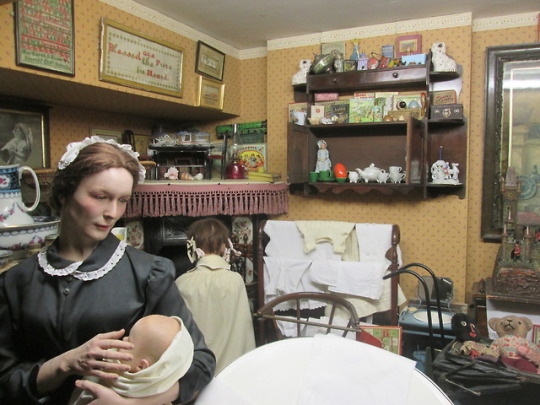

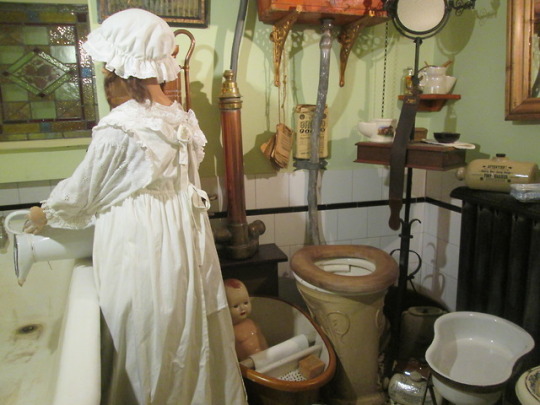




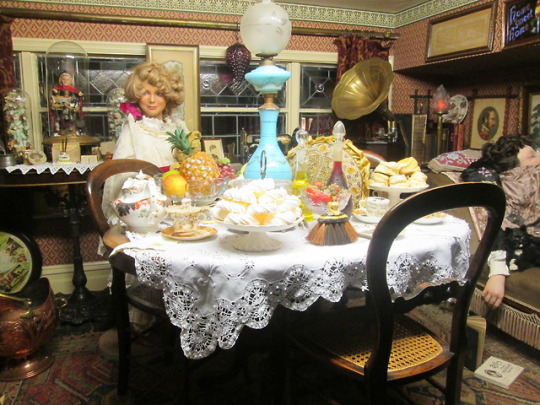
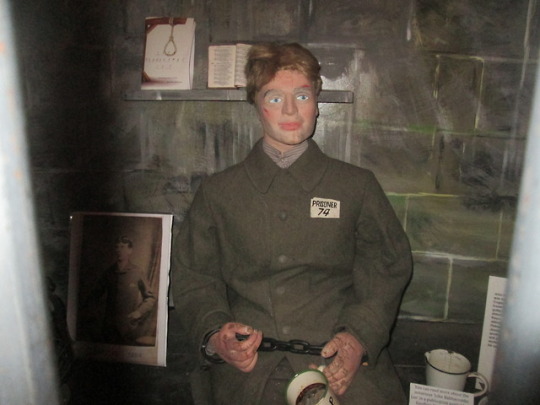
Pics from our Holiday in Devon (7th-14th Sept 2018)
Bygones Museum in Torquay, England ~ The period rooms Part 1.
The man in the cell (bottom pic) is John "Babbacombe" Lee also called "The Man They Couldn't Hang".
#bygones#museums#torquay#england#devon#UK#europe#mannequins#victorian#humans#me#my posts#vintage#toys#dolls#oxo#betty oxo doll#john babbacombe lee#john lee#the man they could not hang
1 note
·
View note
Text
John "Babbacombe" Lee: 3 Kali Lolos dari Tiang Gantungan, Algojo Siap Eksekusi Tapi Ini yang Terjadi
Rini Ivanka John "Babbacombe" Lee: 3 Kali Lolos dari Tiang Gantungan, Algojo Siap Eksekusi Tapi Ini yang Terjadi Artikel Baru Nih Artikel Tentang John "Babbacombe" Lee: 3 Kali Lolos dari Tiang Gantungan, Algojo Siap Eksekusi Tapi Ini yang Terjadi Pencarian Artikel Tentang Berita John "Babbacombe" Lee: 3 Kali Lolos dari Tiang Gantungan, Algojo Siap Eksekusi Tapi Ini yang Terjadi Silahkan Cari Dalam Database Kami, Pada Kolom Pencarian Tersedia. Jika Tidak Menemukan Apa Yang Anda Cari, Kemungkinan Artikel Sudah Tidak Dalam Database Kami.
Judul Informasi Artikel :
John "Babbacombe" Lee: 3 Kali Lolos dari Tiang Gantungan, Algojo Siap Eksekusi Tapi Ini yang Terjadi
Di tahun 1885 itu, dia seharusnya sudah tewas karena digantung. Ini sungguh adalah cerita yang aneh
http://www.unikbaca.com
0 notes
Link
The Family Man show -- 6:30 pm
Listen in Here http://ift.tt/2lmovpT
Listen in Here http://ift.tt/2lmovpT
7:30 pm Chris Edwards discusses the tax plan now circulating in Congress.
Listen in Here http://ift.tt/2lmovpT
8pm Tom Woods
In 2010 I addressed the annual meeting of the Association of American Physicians and Surgeons. I spoke about government and health care, yes, but I also spoke about state nullification — not your usual topic at a physicians’ gathering.
9pm Listen in Here http://ift.tt/2lmovpT
Daniel Lacalle, a Spanish economist and libertarian who runs Mises Hispano, joins Jeff Deist for an in-depth discussion of the facts behind the Catalan independence vote. Daniel makes the case against secession, based on economics, history, constitutionalism, anti-socialism, and his strong view that independence would result in less freedom for Catalans. Jeff disagrees, arguing for self-determination as a fundamental libertarian political principle that contemplates freedom to choose even bad political arrangements. Don't miss this show if you want to understand what is happening in Catalonia beyond the headlines.
10 pm Listen in Here http://ift.tt/2lmovpT
In 1885, a convicted killer suddenly became a legend. Sentenced to death for the murder of his employer at her home on Babbacombe Beach, John Lee mysteriously survived three attempts to execute him at Exeter Prison.
Having placed a noose around Lee’s neck, the hangman pulled a lever to release the trapdoors beneath the prisoner’s feet, but the doors refused to open.
Amazingly, each time Lee was led away, the apparatus was tested and found to work perfectly.
Presented & produced by Chris Batch...
10:30 pm Listen in Here http://ift.tt/2lmovpT
Eric Schleien interviews the CEO of wearwell, Erin Houston on topics from Social Entrepreneurship to spotting investment opportunity while making a difference in the world at the same time.
wearwell is a service (sort of like Stitch Fix or Le Tote). The difference is the company only carries ethically made clothing and accessory brands.
Erin has 7+ years of experience in global development, geeks out on sustainable supply chain strategy, and has loved design since she was very young. Most recently on the senior leadership team of Devex, a global development media company, she built partnerships and generated revenue from multinational corporations, donor agencies, foundations, NGOs, and social enterprises. She loves using her marketing, communications, and sales experience to motivate people to take collective action toward living their values.
M.A. Social Enterprise, American University SIS, 2015B.A. English, Government, The College of William & Mary, 2009Hometown: Wilmington, Delaware
0 notes
Photo

☆FOR SALE☆ FAIRPORT CONVENTION/Babbacombe Lee (71, UK-RCA, ILPS9176) (Disc/Cover)EX-/ EX- (Price) JPY4,090/USD40 http://bit.ly/2rzmyxj フェアポートというと時期によってまったく別のグループのようです。こちらは後期になりますが、冤罪の実話をモチーフにした一大傑作アルバム。この当時にしかないようななんとも言えないジャケも最高。 #レコード #vinyl #黑胶唱片 #sorc #records #recordsforsale #vinylforsale #LP #recordstore #recordshop #中古レコード #名古屋 #覚王山 #レコードショップ #babbacombelee #fairportconvention #rcarecords #コンセプトアルバム (SORC 60's-70's Used Records)
#lp#vinyl#sorc#レコードショップ#babbacombelee#覚王山#recordstore#中古レコード#名古屋#records#rcarecords#コンセプトアルバム#fairportconvention#recordsforsale#recordshop#レコード#黑胶唱片#vinylforsale
0 notes
Photo

The Man They Could Not Hang
Throughout the past 100 years, the myths surrounding John ‘Babbacombe’ Lee’s story have taken on a life of their own.
Urban legends, ghostly sightings and tales of supernatural intervention have grown far beyond what anybody in 19th century South Devon could have imagined for the lowly manservant.
Lee, nicknamed The Man They Could Not Hang, came to prominence when he was convicted of murdering his employer, Emma Keyse, and setting fire to her Babbacombe home, called The Glen.
Mike Holgate, of Torquay, an expert on John Lee, said: “During his trial, the prosecution portrayed Lee as a depraved lunatic capable of smashing an old lady’s head with an axe, then slashing her throat with a knife.
“The judge, in passing sentence of death, remarked how calm Lee’s demeanor had been throughout the trial.
“Lee is said to have leaned forward in the dock and replied firmly: ‘The reason why I am so calm is that I trust in the Lord, and He knows I am innocent.’
“In the days leading up to the date of execution, Lee read the Bible prodigiously and proclaimed his innocence.
“It is said he told the prison chaplain the real culprit was the lover of his half-sister, Elizabeth Harris, who was cook at The Glen and expecting a child which was later delivered out of wedlock in Newton Abbot Workhouse.”
The prison governor’s logbook states on the morning of the execution, as Lee approached the gallows trapdoor, he told two prison guards he had dreamt ‘three times the bolt was drawn, and three times the bolt failed to act’.
Lee was a lonely figure on the gallows, but each time an attempt was made to open the trapdoor, it stuck. After each failed attempt the trapdoor was tested and it opened normally, but when Lee stood on it again the door would not open. Three times this happened, each with the same outcome. It is rumored that throughout the ordeal on the scaffold, a white dove perched on the gallows until the condemned man was led safely back to his prison cell.
The Home Secretary told Parliament he could not expect a man to ‘twice face the pangs of imminent death’. Lee began a 23-year prison sentence in Exeter, and from that day the myths about his life spread across the world. Witchcraft and devilish incantations were often talked of when people tried to reason Lee’s escape from death. Friends of Lee claimed they had paid a white witch handsomely to save him from the noose.
Other people told stories of how Lee’s mother had visited the church graveyard near her home at Abbotskerswell, recited the Lord’s Prayer backwards and summoned the Devil to save her son. Also, an old woman called Granny Lee, from Ogwell, is said to have told locals ‘they shall not hang him’ as she walked to Exeter on the morning of the execution and cast a spell on the gallows from a spot overlooking the prison.
In 1905, the witchcraft theory gained credence from a surprising source, the Archdeacon of Westminster, Basil Wilberforce. At the time of the murder he had been a regular visitor to Babbacombe, where he addressed temperance meetings organized by a distinguished neighbor of Emma Keyse, Lady Mount-Temple of Babbacombe Cliff. The churchman was chaplain to the House of Commons and vehemently opposed a growing campaign for Lee’s release. He informed the Home Office that he ‘knew the Lees well’ and said they were ‘a well-known witch family on Dartmoor’.
Whether miracle or sorcery, the events on the scaffold cast doubt in many people’s minds about Lee’s guilt. The editor of The Times, who poured scorn on the Home Secretary’s decision to eventually reprieve Lee, said Lee’s story would ‘encourage foolish and superstitious people to believe, in spite of evidence as clear as noonday, that Lee was wrongfully convicted’.
Mike added: “The Home Office didn’t help themselves, because they refused to release details about the trapdoor malfunction for 100 years, so the myths grew. “There were even questions asked in Parliament at the time. I can’t understand why they wouldn’t announce the details, and they had all the speculation to go through again when he left prison 23 years later.”
After his release, Lee went to London, where he then eloped with a barmaid, abandoning his wife who was expecting their second child. He then seemingly disappeared without trace, having reportedly visited Australia, America and Canada and Mike Holgate only recently discovered that Lee died in 1945.
Mike traced the grave to a cemetery in Milwaukee, America. Records show Lee died, aged 80, on March 19, 1945. The legend certainly did not die with Lee, however, because Mike recently recorded a number of spooky tales about The Man They Could Not Hang. He said: “A strange event added to the mystery more than a century later when a pub named the John Lee opened on Babbacombe Downs at Easter, 1989. “At the beginning of June, the swinging pub sign bearing the logo of a hanged man fell to the ground on three consecutive nights for no discernible reason.
7 notes
·
View notes
Text
Music Diary - 2nd November
Music Diary – 2nd November
Welcome to my Music Diary – today for the 2nd November!
Dave Pegg (Fairport Convention, Jethro Tull)
Happy birthday to Mr. Dave “Peggy” Pegg, who was born on the 2nd November 1947 in Birmingham, UK. The English mulit-instrumentalist is best known for his playing with the legendary Folk band Fairport Convention and his contribution as a bass player for Jethro Tull from 1979 until 1995.
At the age…
View On WordPress
#Andrew Giddings#Angel Delight#Babbacombe Lee#Barriemore Barlow#Chris Leslie#Dave Mattacks#Dave Pegg#Dave Swarbrick#David Palmer#David Pegg#Doane Perry#Eddie Jobson#Fairport Convention#Fotheringay#Frank Zappa#Full House#Gerry Conway#Giles#Giles and Fripp#Gottle O&039;Geer#Ian Anderson#Jethro Tull#John Bonham#John Evans#John Glascock#John Peter Vettesse#Led Zeppelin#Mark Craney#Martin Barre#Nine
0 notes